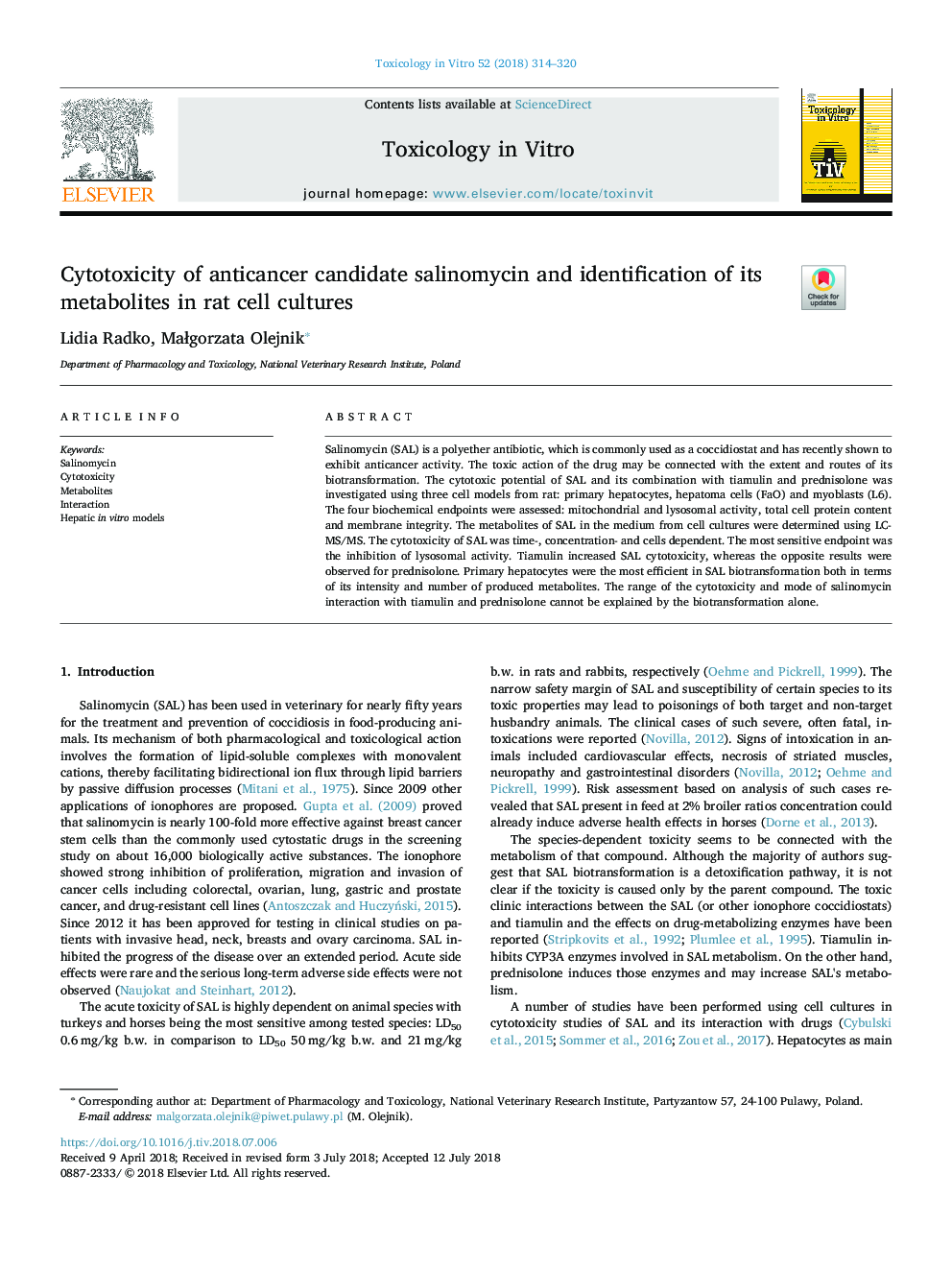| کد مقاله | کد نشریه | سال انتشار | مقاله انگلیسی | نسخه تمام متن |
|---|---|---|---|---|
| 8553806 | 1562693 | 2018 | 7 صفحه PDF | دانلود رایگان |
عنوان انگلیسی مقاله ISI
Cytotoxicity of anticancer candidate salinomycin and identification of its metabolites in rat cell cultures
ترجمه فارسی عنوان
سمیت سلولومیسین کاندیدای ضد سرطان و شناسایی متابولیت های آن در کشت سلول های موش صحرایی
دانلود مقاله + سفارش ترجمه
دانلود مقاله ISI انگلیسی
رایگان برای ایرانیان
کلمات کلیدی
موضوعات مرتبط
علوم زیستی و بیوفناوری
علوم محیط زیست
بهداشت، سم شناسی و جهش زایی
چکیده انگلیسی
Salinomycin (SAL) is a polyether antibiotic, which is commonly used as a coccidiostat and has recently shown to exhibit anticancer activity. The toxic action of the drug may be connected with the extent and routes of its biotransformation. The cytotoxic potential of SAL and its combination with tiamulin and prednisolone was investigated using three cell models from rat: primary hepatocytes, hepatoma cells (FaO) and myoblasts (L6). The four biochemical endpoints were assessed: mitochondrial and lysosomal activity, total cell protein content and membrane integrity. The metabolites of SAL in the medium from cell cultures were determined using LC-MS/MS. The cytotoxicity of SAL was time-, concentration- and cells dependent. The most sensitive endpoint was the inhibition of lysosomal activity. Tiamulin increased SAL cytotoxicity, whereas the opposite results were observed for prednisolone. Primary hepatocytes were the most efficient in SAL biotransformation both in terms of its intensity and number of produced metabolites. The range of the cytotoxicity and mode of salinomycin interaction with tiamulin and prednisolone cannot be explained by the biotransformation alone.
ناشر
Database: Elsevier - ScienceDirect (ساینس دایرکت)
Journal: Toxicology in Vitro - Volume 52, October 2018, Pages 314-320
Journal: Toxicology in Vitro - Volume 52, October 2018, Pages 314-320
نویسندگان
Lidia Radko, MaÅgorzata Olejnik,
